#tomato farming
Text
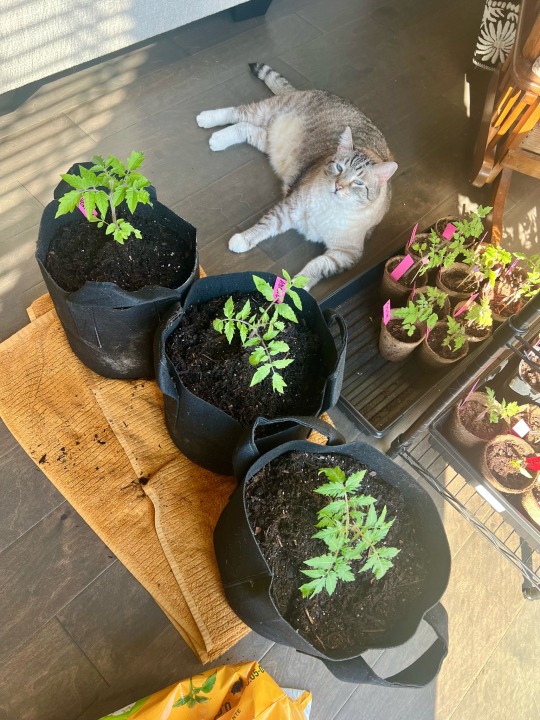
4/18/24 ~ Martin helping with transplanting my bigger tomatoes! Slowly doing them all 😅 #badplantmom
#indoor garden#sustainable gardening#container gardening#vegetable gardening#starting seeds#growing food#plant life#plant mom#veganuary#homesteading#tiny tim tomatoes#grafting tomatoes#tomato farming#grow your own food#organichorticulture#wild boar farms
11 notes
·
View notes
Text


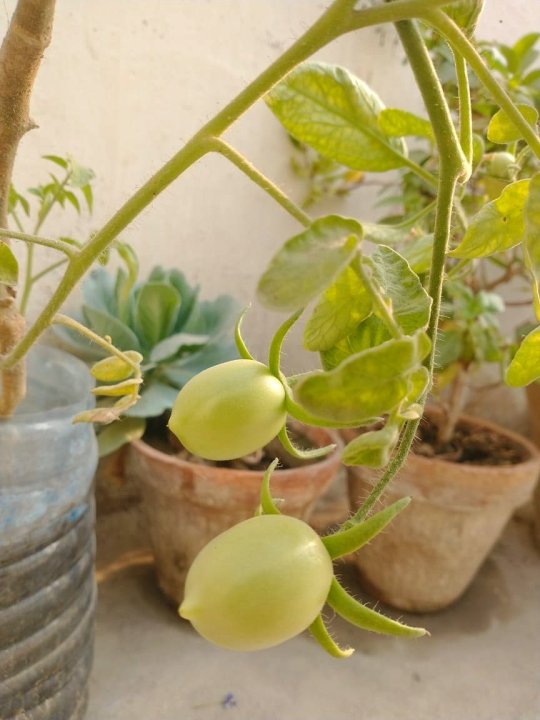
Baby Tomatoes 🍅
tried growing tomatoes at home, and now they're doing really well!
6 notes
·
View notes
Text

Why does it specify the picture was taken pre-harvest?
0 notes
Text

Basil Gardening 101: A Beginner's Guide to Cultivating Flavorful Herbs
Are you an adult beginner with zero gardening experience but a desire to cultivate your own fresh basil? Well, you're in the right place! Growing basil is not only a rewarding experience, but it also adds a burst of flavor to your culinary adventures. In this comprehensive guide, we'll walk you through the basics of basil gardening, step by step, ensuring that even if you've never touched a spade before, you'll soon be able to start harvesting fragrant basil leaves from your own garden.
Understanding Basil: A Brief Introduction
Basil, also known as Ocimum basilicum, is a versatile herb that boasts a distinctive aroma and flavor. Its vibrant green leaves make it a must-have for any kitchen garden. Before diving into the gardening process, let's explore the different types of basil available and their unique characteristics. From sweet basil to Thai basil, each variety offers a distinct taste, perfect for enhancing various dishes.
Setting Up Your Basil Garden: Essential Requirements
1. Location Matters:
Choosing the right location for your basil plants is crucial. Basil thrives in sunlight, so pick a spot that receives at least 6-8 hours of sunlight per day. Whether you opt for a balcony, patio, or backyard, make sure the chosen area has well-draining soil.
2. Soil Preparation:
Basil prefers well-draining soil with a slightly acidic to neutral pH. Enhance your soil with organic matter like compost to ensure optimal growth. Consider using a potting mix if you're planning to grow basil in containers.
3. Selecting Basil Varieties:
As a beginner, start with the classic sweet basil. It's easy to grow and widely used in various cuisines. Once you gain confidence, you can experiment with other varieties like lemon basil, Thai basil, or purple basil.
Planting Basil Seeds or Seedlings
1. Timing is Key:
Basil is sensitive to cold temperatures, so it's essential to plant your seeds or seedlings after the last frost. In most regions, this is during the spring.
2. Seed Planting:
If you're starting from seeds, plant them indoors 6-8 weeks before the last frost. Use a seed-starting mix, keep it consistently moist, and watch for the emergence of seedlings.
3. Transplanting Seedlings:
Once the seedlings have a couple of sets of true leaves, transplant them into your prepared garden bed or containers, ensuring proper spacing.
Caring for Your Basil Plants
1. Watering:
Basil prefers consistent moisture but doesn't like to be waterlogged. Water the plants when the soil feels slightly dry to the touch, and avoid overhead watering to prevent fungal diseases.
2. Fertilizing:
Feed your basil plants with a balanced, all-purpose fertilizer every 4-6 weeks. Be cautious not to over-fertilize, as this can lead to excessive foliage growth with diminished flavor.
3. Pruning and Harvesting:
Regularly pinch off the tips of your basil plants to encourage bushier growth. Harvest leaves once the plant is mature, typically after 6-8 weeks. Use clean, sharp scissors to cut just above a set of leaves, promoting continued growth.
Troubleshooting Common Basil Issues
Even the most seasoned gardeners face challenges, and as a beginner, you might encounter a few hurdles along the way. Here are some common issues and their solutions:
1. Yellowing Leaves:
This could indicate overwatering or poor drainage. Adjust your watering schedule and ensure proper drainage.
2. Pests:
Keep an eye out for common basil pests like aphids and spider mites. Use insecticidal soap or neem oil to combat these invaders.
3. Diseases:
Prevent fungal diseases by providing adequate spacing between plants, promoting good air circulation.
Conclusion: Enjoy the Fruits of Your Labor
Now that you've successfully navigated the basics of basil gardening, as your plants flourish, experiment with incorporating fresh basil into your favorite recipes. Whether it's a classic Italian pasta dish, a refreshing summer salad, or a homemade pesto sauce, your homegrown basil will elevate your culinary creations to new heights.
Embarking on your gardening journey as an adult beginner may seem daunting, but with the right guidance, cultivating basil can be a fulfilling and enjoyable experience. From choosing the perfect spot to harvesting your bountiful crop, this guide has equipped you with the tools to begin your basil garden. So, roll up your sleeves, grab your gardening tools, and let the aromatic journey begin!
Disclaimer: The information provided in this blog is intended for general informational purposes only.
The content provided in this blog is based on commonly accepted gardening practices, and it is not a substitute for professional advice.
While we strive to offer accurate and up-to-date information, gardening practices can vary based on regional climates, soil conditions, and other factors. Readers are encouraged to consider their specific local conditions and seek advice from local gardening experts or agricultural extension services for tailored recommendations.
"The Garden Enthusiast" and its author(s) assume no responsibility or liability for the accuracy, completeness, or usefulness of the information provided. The use of any information from this blog post is at the reader's discretion and risk.
The blog may contain links to external websites or resources. "The Garden Enthusiast" is not responsible for the content, accuracy, or practices of external sites. Links to such external sites do not imply endorsement, and readers should review the privacy policies and terms of service of those sites.
Gardening involves inherent uncertainties, and results may vary. Readers are advised to exercise due diligence and seek professional advice before making decisions based on the information presented in this blog post.
"The Garden Enthusiast" reserves the right to modify, update, or remove content at any time without prior notice. The views and opinions expressed in this blog post are those of the author(s) and do not necessarily reflect the official policy or position of "The Garden Enthusiast."
By accessing and using this blog post, readers acknowledge and agree to the terms of this disclaimer. If you do not agree with these terms, it is recommended that you refrain from using the information provided in this blog post.
For any specific gardening concerns or questions, readers are encouraged to consult with qualified professionals or local gardening authorities.
Thank you for your understanding, and happy gardening!
"The Garden Enthusiast"
#gardening tools#tomato farming#growing tomatoes#tomatoes#tomato gardening#tomato#newbie#how to#tips#green thumb#garden#plants#leaves#flowers#beginner garden#beginner gardening#beginner guide#homegrown vegetables#homegrown#gardening#planting#plantlife#horticulture#botany#indoor plants#organic#easy to grow#easy#diy#diy projects
0 notes
Video
youtube
टमाटर की खेती कब और कैसे करें | Tomato Kheti Kaise Kare | Tamatar Ki Kheti ki Full Information
0 notes
Text
Tomato Cultivation; Farming Techniques - A Complete Guide
1. Site Selection and Soil Preparation:
Site Selection: Select a sunny spot with good draining soil and air circulation.
Soil Testing: Check soil pH and fertility. Add compost or manure to your soil if necessary.

2. Variety Selection and Planting:
Selecting Tomato Varieties: Select the right type or tomato suitable for your climate and purpose. This can either be determinate, indeterminate, slicing, or cherry tomatoes, and so on.
Seed Starting or Transplanting: Purchasing seedlings or starting seeds indoors 6-8 weeks before the last frost date. Transplant seedlings after they have developed true leaves and when frost is no longer a danger.
Planting Depth and Spacing: Plant tomatoes deeply, covering the lower part or stem into the soil. Plant according to variety recommendations in space.
Kisan App
3. Care and Maintenance:
Watering: Maintain consistent soil moisture. Deep water the soil, allowing it to slightly dry in between each watering cycle.
Fertilizing: Use balanced fertilizers or compost to provide the required nutrients. Follow recommended application rates.
Support: Stake or cage indeterminate varieties to support them and to prevent sprawling.
Pruning: Prune indeterminate varieties removing suckers and lower leaves to encourage wind and fruit production.
Mulching: Mulch around plants to retain moisture, suppress weeds, and regulate soil temperature.
Kisan App
4. Pest and Disease Management:
Monitoring: Inspect plants regularly for signs of pests, diseases, or nutrient deficiencies.
Integrated Pest Management (IPM): Control pests using organic methods such as crop rotation, companion planting, and beneficial insects.
Disease Prevention: Practice the good sanitation, rotation of crops and use of disease-resistant varieties to reduce diseases.
5. Harvesting:
• Timing: Tomatoes should be harvested at their optimal size, color, and firmness for the variety. Ripe tomatoes should give slightly when pressure is applied.
• Technique: Cut tomatoes off from the vine using shears to reduce damage to the plant.
6. Post-Harvest:
• Storage: Place ripe tomatoes in a room temperature place and do not expose them to direct sunlight. Ripen unripe tomatoes indoors or eat them within a few days.
• Preservation: You can process extra-tomatoes using canning, freezing or drying for future use.
Following these procedures, providing the tomato plants with the necessary care, and paying attention to their needs during the growth phase will yield a successful and bountiful harvest.
0 notes
Text
ইউনিফর্ম পরে চাষ করছেন কৃষক! কনস্টেবলের আয় শুনলে চমকে যাবেন
কলকাতাঃ ভারত সারা বিশ্বে নানা ক্ষেত্রে এগিয়ে গেলেও কৃষিই তার ভিত্তি। এখনও ভারতের অধিকাংশ মানুষ কৃষিকার্যের সঙ্গে যুক্ত। এমন অনেক মানুষই রয়েছেন যাঁরা বিভিন্ন পেশার সঙ্গে যুক্ত থেকেও সমানতালে নিজেদের পৈতৃক কৃষিকাজের সঙ্গে নিজেদের যুক্ত রেখেছেন। চাষবাসের সঙ্গে যাঁদের সম্পর্ক রয়েছে অর্থাৎ তাঁরা অনেকেই হয়তো এখন অন্য পেশায় প্রতিষ্ঠিত। কিন্তু তাঁদের মধ্যে পুরনো কাজে ফেরার একটা তাগিদ ইদানীং দেখা…
View On WordPress
#bangla news#bengali news#business idea#farmer#Karnataka#new agriculture idea#new business idea#policeman#profit#Tomato#Tomato Farming#টমেটো চাষ#বাংলা খবর
0 notes
Text
Tomato Farming: टमाटर की खेती बनी कुबेर का खज़ाना, 45 दिन में 4 करोड़ रुपये की कमाई
टमाटर ने इस किसान को किया कर्जमुक्त, साथ ही बनाया करोड़पति
टमाटर की खराब फसल के कारण जहां हर साल किसान परेशान रहते थे, वहीं इस साल टमाटर सोने का भाव बिक रहा है, जिससे किसानों की चांदी हो गई है। ऐसे ही आंध्र प्रदेश के एक किसान को भी टमाटर ने महज़ डेढ़ महीने में करोड़पति बना दिया है। टमाटर की खेती किसानों के लिए कुबेर का खज़ाना साबित हो रही है।

टमाटर की खेती | टमाटर की आसमान छूती कीमतों ने जहां ग्राहकों की जेब ढीली कर दी है, वहीं किसानों की बल्ले-बल्ले हो रही है। कभी कम कीमत मिलने के कारण टमाटरों को सड़कों पर फेंकने की खबरें आपने भी सुनी होंगी, मगर आज के हालात कुछ और ही है। गृहणियों ने टमाटर के इस्तेमाल में कटौती शुरू कर दी है, क्योंकि इसने उनके महीने का बजट पूरी तरह से बिगाड़ दिया है, मगर वहीं दूसरी ओर किसानों के चेहरे पर खुशी दिख रही है, क्योंकि टमाटर उन्हें मालामाल जो कर रहा है।
आंध्र प्रदेश के एक किसान मुरली ने सिर्फ़ 45 दिनों में टमाटर की बिक्री से 4 करोड़ की कमाई की है। पिछले साल का डेढ़ करोड़ का कर्ज और बाकी खर्च निकालकर उन्हें 2 करोड़ का सीधा मुनाफ़ा हुआ है।
टमाटर ने लगाई नैय्या पार
पिछले साल जिस टमाटर ने आंध्र प्रदेश के चित्तूर ज़िले के करकमंडला गांव के रहने वाले मुरली को करोड़ों के कर्ज में डुबा दिया था, आज उसी टमाटर ने उन्हें मालामाल कर दिया है। उन्होंने कभी सपने में भी नहीं सोचा होगा कि टमाटर की खेती उनके लिए कुबेर का खज़ाना साबित होगी। दरअसल, 45 दिनों में ही मुरली को टमाटर बेचकर 4 करोड़ रुपए की कमाई हो चुकी है। अभी बेचने के लिए और फसल बाकी है यानी उनका मुनाफ़ा अभी और बढ़ेगा। मुरली की ही तरह इस बार टमाटर ने कई किसानों को मालामाल कर दिया है।
50 हज़ार की कमाई
मुरली का परिवार सालों से खेती कर रहा है। एक इंटरव्यू के दौरान मुरली ने बताया कि उनके पिताजी को टमाटर की खेती से एक बार 50,000 का फ़ायदा हुआ था। उन्होंने उन पैसों को घर की अलमारी में रख दिया था। सभी घरवाले रोज़ इस अलमारी की पूजा किया करते थे, क्योंकि उनके लिए 50,000 रुपये बहुत बड़ी रकम थी, मगर मुरली को क्या पता था एक दिन टमाटर से उन्हें छप्पड़फाड़ आमदनी होगी।
और पढ़ें.....
0 notes
Text
youtube
#tamatar#tamatar_ki_kheti#khetkisan#khetibadi#kheti#kisani#khetkisantv#farming#cultivation#india#famers#tomato farming#Youtube
0 notes
Text
टमाटर की खेती से अच्छा मुनाफा कमा रहे हैं किसान, जानिए इसकी खेती के बारे में सबकुछ
टमाटर की खेती से अच्छा मुनाफा कमा रहे हैं किसान, जानिए इसकी खेती के बारे में सबकुछ
Tomato Farming: टमाटर किसानों को अच्छा दाम देने वाली फसलों में शामिल है. इसकी खेती से पहले बीज का उपचार जरूर करें. आधुनिक तरीके से खेती करके किसान अच्छी पैदावार और मुनाफा कमाकर अपनी आर्थिक स्थिति ठीक कर सकते हैं.
टमाटर की खेती से किसानों की हो रही हैं अच्छी कमाई.
Image Credit source: TV9 Digital
उत्तर प्रदेश में सब्जियों में सबसे ज्यादा बिकने वाली टमाटर की फसल से किसान लाखों का मुनाफा कमा रहे…

View On WordPress
1 note
·
View note
Text
I NEED more crops in Minecraft I'm not joking
#this post was made about tomatoes#minecraft#i fucking love farming please give us more crops mojang
973 notes
·
View notes
Text

4/7/24 ~ transplanted some stuff that was left over in my seed tray that I neglected 🥲 They aren’t too happy right now 🙃🌱
Some of them are Tamarillos. Anyone familiar with those? It was a random purchase for me 😋
#tamarillo#transplanting#starting seeds#tomato farming#pepper garden#growing peppers#sustainable gardening#edible landscaping#permaculture#indoor garden#container gardening#vegetable gardening#growing food#plant life#plant mom#veganuary#grow organic#grow food not lawns
8 notes
·
View notes
Text

I love my farming teams
Grey arrows = neutral
Blue arrows = positive, we can be broooooos
Red arrows = gonna fucking murder you in your sleep
Yellow arrow = *cries ugly tears*
Bonus:

#tomato rambles#tomato plays fgo#yes yes my farming teams are BORING and NOT CREATIVE#whatever it WORKS#why did i make this#now do i tag this properly#yeah whatever#fate#fate grand order#lostbelt 6 spoilers#lb6#morgan le fae#lostbelt morgan#oberon#oberon vortigern#koyanskaya#castoria#senji muramasa#achilles#scathach skadi#lord el melloi ii#waver velvet#merlin#tamamo no mae#who i only got this year lmao#i've never used her which is why she's so tiny haha
229 notes
·
View notes
Text

"[...] another small garden party, so I arranged tomatoes from the garden."
@yasminemei on instagram
#yasminemei#mine#farmcore#cottagecore#tomato#tomatoes#tomato girl#garden party#food table#food arrangement#garden aesthetic#garden#cottage aesthetic#farm aesthetic
124 notes
·
View notes
Text
Tomato Triumph: A Beginner's Guide To Growing Tasty Tomatoes In Your Garden
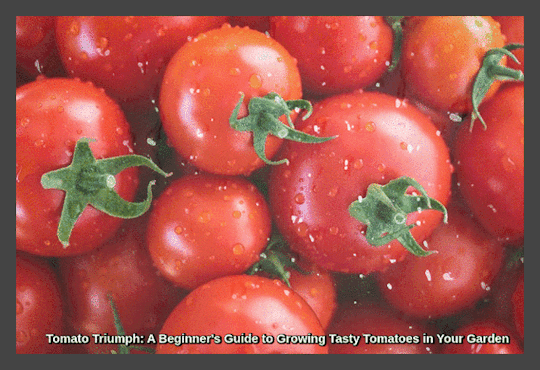
Are you ready to embark on a green adventure in your backyard? Growing your own tomatoes is not only a rewarding experience but also an exciting journey into the world of gardening. Whether you're a complete novice or a seasoned green thumb, this step-by-step guide will help you cultivate delicious tomatoes right in your own garden.
Getting Started
Choosing the Right Tomato Varieties
Before you dive into the world of tomato growing, it's essential to pick the right varieties for your garden. As a beginner, start with easy-to-grow options like cherry tomatoes, Roma, or Early Girl. These varieties are robust and forgiving, making them perfect for first-time gardeners.
Picking the Perfect Spot
Tomatoes love sunlight, so choose a spot in your garden that receives at least 6-8 hours of direct sunlight each day. Ensure that the soil is well-draining and rich in nutrients. If your soil needs a boost, consider adding compost to create a tomato-friendly environment.
Planting Your Tomato Seeds
Timing Matters
Timing is everything in the world of gardening. Plan to plant your tomato seeds indoors 6-8 weeks before the last expected frost in your area. This gives your little tomato seeds a head start before transplanting them outdoors.
Planting Depth
When planting your tomato seeds, follow the rule of thumb: bury them twice as deep as their size. This helps the young plants develop strong roots. Use seed trays or small pots filled with seed-starting mix for the best results.
Transplanting Seedlings
Outdoor Transition
Once your tomato seedlings are about 6-8 inches tall and have a couple of sets of true leaves, they are ready to move outdoors. Choose a mild, overcast day for transplanting to reduce stress on the young plants.
Proper Spacing
Give your tomato plants enough room to spread their roots and grow. Plant them at least 2 feet apart to ensure good air circulation, which helps prevent diseases.
Caring for Your Tomato Plants
Watering Wisely
Tomatoes like their soil consistently moist but not waterlogged. Water them at the base to keep the leaves dry, reducing the risk of fungal diseases. Aim for about 1-2 inches of water per week, adjusting based on weather conditions.
Fertilizing Tips
Feed your tomato plants with a balanced fertilizer once a month to keep them well-nourished. Avoid over-fertilizing, as it can lead to excessive foliage growth at the expense of fruit production.
Staking for Support
As your tomato plants grow, they might need a little support to keep them upright. Use stakes or tomato cages to prevent sprawling and ensure proper airflow around the plants.
Harvesting the Fruits of Your Labor
Knowing When to Pick
The most exciting part of growing tomatoes is, of course, harvesting them! Wait until the tomatoes are fully colored and slightly soft to the touch before plucking them. This ensures optimal flavor and sweetness.
Enjoy the Fruits of Your Labor
Congratulations! You've successfully grown your own tomatoes. Whether you slice them for a fresh salad, blend them into a savory sauce, or enjoy them straight from the vine, the taste of homegrown tomatoes is unbeatable.
Troubleshooting Tips
Dealing with Common Issues
No garden journey is without its challenges. Keep an eye out for common tomato problems like pests, diseases, or nutrient deficiencies. A proactive approach to addressing issues will keep your tomato plants healthy and thriving.
Conclusion
Growing tomatoes is a delightful and gratifying experience that anyone can enjoy. With a bit of patience, care, and a touch of green magic, you'll soon be savoring the fruits of your labor. So, roll up your sleeves, put on your gardening gloves, and let the tomato-growing adventure begin! Happy gardening!
#tomatoes#tomato farming#tomato gardening#growing tomatoes#how to#tips#beginner guide#beginner gardening#gardening#homegrown#vegetables#homegrown vegetables#garden#planting#plants#horticulture#botany#organic#easy#easy-to-grow#backyard#diy projects#diy#seeds#fresh#soil#farming#agriculture#green thumb#nutrient rich
1 note
·
View note
Text
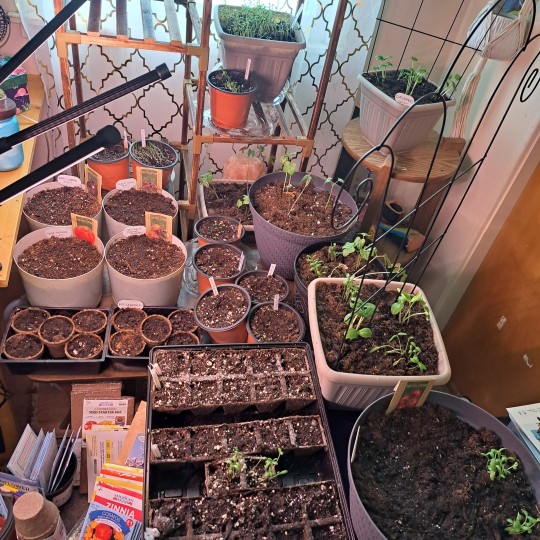

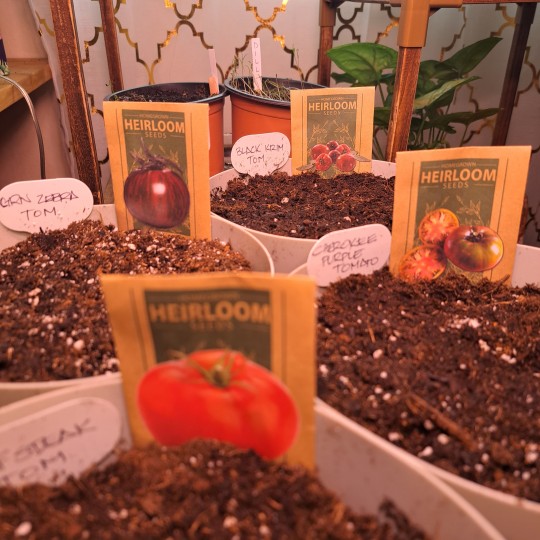


Ooooookaaaay Round 2! Transplanted all.of those morning glories that shot up into bigger pots.
Distributed Marigolds into Basil and tomato pots.
Got 8 cucumber shoots transplanted into their own pots.
Planted Hollyhock seeds and a varying variety of different tomato plants.
My craft room is over flowing!! I can't wait to get the greenhouse back up. Hopefully it will be done by April 15th!
#urban gardening#gardeners on tumblr#container gardening#urban farming#green thumb#gardenblr#cottagecore#greenblr#cottageblr#self sustainability#hollyhock#tomato plant#basil#dill#cilantro#marigolds#native wildflowers
41 notes
·
View notes